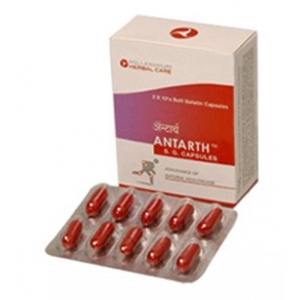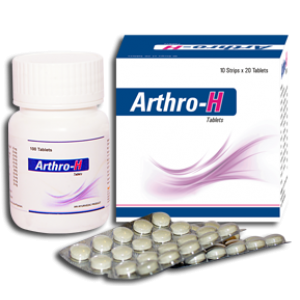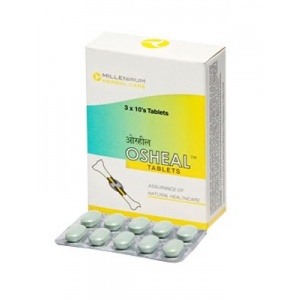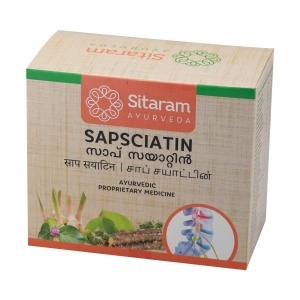Bursitis
Showing all 4 results
What is Bursitis?
A ‘Bursa’ is a small, fluid-filled sac, present throughout the body especially around the joints. The function of these bursae is to prevent friction between moving joints. A human body contains about 160 bursae. These bursae are lined with synovial cells that secrete a collagen and protein rich fluid, that act as a lubricant for mobilizing joints, bones and tendons. Sometimes, due to excessive wear and tear, these bursae may get damaged, leading to a condition called ‘Bursitis’ causing swelling, pain and difficulty in movement.
What are the symptoms of Bursitis?
Bursitis causes pain and swelling around the affected joints and tendons. There may be difficulty in movement, and tenderness in certain areas, depending on the joint that is affected. Most commonly affected joints are Elbows, Knees, Shoulder Cuff and the ischial bursa, which lies between the pelvic bone and the upper region of the gluteus maximus causing pain the the buttock region and difficulty in walking straight. Damage to the knee bursa (usually from wear and tear or excessive kneeling) causes redness, stiffness of joints and may also be accompanied with a mild fever.
What causes Bursitis?
The most common causative factor for bursitis is trauma. This could be either due to regular wear and tear or injury due to direct impact. This could be either acute for eg if you hit your knee against a table, causing the bursa to leak out fluid, or chronic, which involves repetitive wear and tear of a single joint. For example, baseball players that develop bursitis of the shoulder from excessive fragmentation of the shoulder cuff from throwing the ball with force.
Bursae that are situated close to the skin’s surface, such as elbows can also be affected due to bacterial infections. These are known as septic bursitis, and are commonly caused by Staphylococcus aureus or Staphylococcus epidermis. Diabetics, alcoholics and individuals suffering from kidney disorders are more prone to be affected by Septic bursitis. Also for some reason, men are more prone to septic bursitis than women.
Rhumetoid conditions such as gout also trigger bursitis, due to crystal deposits in joint areas, causing inflammation that lead to damage to the bursae.
How is bursitis treated?
Bursitis is treated with Anti-biotics and Non-steroidal Anti Inflammatories such as Aleve, anaprox, etc. to help relieve the pain and inflammation. Simultaneously, therapeutic treatments such as ice-packs and physiotherapy should be administered. A physiotherapist will suggest excercises and stretches that will help keep your joints mobilized, and prevent calcification (If left untreated, calcification could cause inflammations and lead to complication in your tendons or bone growth). The only downside of conventional treatment is that it does not address repair and regrowth of the damaged bursae. Also, NSAIDs and other drugs could cause several side effects such as headache, nausea, stomach irritation, heart palpatations and possible drug dependency.
Is there a safe, natural way to treat bursitis?
VedHerbs Bursitis Therapy kit contains a combination of ancient Ayurvedic herbs and homeopathic formulations, put together by our doctors, to help you heal naturally and holistically. The herbs and botanical extracts that have been used traditionally, work toward reducing pain and inflammation, while at the same time priming your body’s healing mechanisms to help the damaged bursae rebuild themselves.
The homeopathic tinctures contain nosodes that remind your joints and tendons of optimal functionality with bioenergetic information of healthy tissue. These also help strengthen your ligaments and connective tissues, so that they can better support your joints and prevent recurrence. If pain persists, you can contact one of our doctors for a free online consultation. Our team of Doctors can then better assess your situation and body’s biomechanics, to put you on medication that might be better suited for you. They may also recommend alternative therapies (Such as cupping, acupuncture, etc) that may help quicken the healing process.
What is Bursitis?
A ‘Bursa’ is a small, fluid-filled sac found throughout your body especially around your joints. There are about 160 bursae in your body that work to prevent friction between moving joints. These small, fluid-filled sacs are lined with synovial cells that secrete a collagen and protein rich fluid that lubricates and cushions the pressure points between your bones, tendons and muscles thus mobilizing them.
Sometimes, due to excessive wear and tear, these bursae may get damaged, leading to a condition called ‘Bursitis’ causing swelling and pain around your muscles and bones leading to difficulty in movement.
Bursitis can be acute (short term) or chronic (long-lasting). The condition is categorized based on the part of the body affected, or according to the root cause.
The different types of bursitis include:
- Subacromial-subdeltoid bursitis: When the shoulder is affected as a result of repetitive overhead motion
- Olecranon bursitis: Bursitis affecting the elbow joint
- Ischial bursitis: Inflammation around the lower back region and buttocks due to prolonged sitting
- Iliopsoas/ Trochanteric bursitis: When the hip and upper thigh are affected
- Pes anserine(knee tendon) bursitis: When the knee is affected making it difficult to alight
- Prepatellar bursitis: An affliction of the knee on account of kneeling on hard surfaces; also called housemaid's knee
- Achilles bursitis: when the Achilles tendon that attaches to the heel bone is afflicted
- Retrocalcaneal bursitis: When the back of the heel is affected
- Septic Bursitis: Caused by the staphylococcus bacterial strain leading to infection and inflammation.
What causes Bursitis?
SYMPTOMS
How is Bursitis Diagnosed
Bursitis Diagnosis
A bursitis diagnosis starts with your doctor asking for your medical history and physically examining your area of pain by touching the joint to see whether the tendons are swollen.
You may be asked to describe the location, onset and severity of pain and details of elements and situations that ease or aggravate your pain will be noted as well.
Laboratory tests recommended for diagnostic purposes include:
X-rays to rule out other problems
A magnetic resonance imaging (MRI) test, which can show a swollen bursa.
Aspirating fluid from the swollen area to test for an infection
Blood tests to rule out other health problems.
Treatment of Bursitis
Is There a Safe, Natural Way to Treat Bursitis?
Bursitis treatments that include natural and holistic herbal and homeopathic ingredients have shown to potentially help reduce pain and inflammation as well as rejuvenate bursae health.
The VedHerbs Bursitis Therapy kit contains a combination of ancient Ayurvedic herbs and homeopathic formulations, put together by our doctors, to help you heal naturally and holistically. The herbs and botanical extracts that have been used traditionally work toward reducing pain and inflammation, while at the same time priming your body’s healing mechanisms to help the damaged bursae rebuild themselves.
Some of the best herbs recommended by Ayurveda for Bursitis include:
Boswellia serrata:
This herb has a list of well documented benefits. Phytochemical studies have indicated the presence of active constituents that chiefly possess anti-microbial, anti-fungal, anti-inflammatory, and analgesic activities. Due to these versatile properties Boswellia has been used for providing pain relief in a number of inflammatory conditions such as osteoarthritis, rheumatoid arthritis, gout, carpal tunnel, bursitis, and tendonitis.
Harpagophytum procumbens (Devil's Claw);
This herb is a very popular remedy traditionally used to support healthy joints. Clinical studies have demonstrated that Devil's Claw may effectively rejuvenate joints, cartilage and the back (especially lower back).Moreover, its potent anti-inflammatory properties warrants its use in conditions like bursitis.
Turmeric (Curcuma longa);
This herb has undoubtedly so many versatile properties that it is a go to herb for any kind of inflammatory disorder. It is also said to boost immunity, provide anti-oxidant power and rejuvenate various organ systems of your body. Curcumin, the bioactive ingredient of turmeric has anti-inflammatory properties that potentially inhibit the activity and production of inflammatory markers thus providing aid in controlling inflammation in bursitis. Curcumin also possesses analgesic properties that alleviate various kinds of pain and its broad spectrum anti-microbial effect inhibits the growth of bacteria, yeast, fungi, viruses and even parasites that may lead to septic bursitis.
At Ved herbs we combine ayurvedic herbs, advanced nutritional ingredients for optimal functioning of joints and tendons. These also help strengthen your ligaments and connective tissues, so that they can better support your joints and prevent recurrence.
If pain persists, you can contact one of our doctors for a free online consultation. Our team of Doctors will assess your situation and your body’s biomechanics to put you on medication that might be better suited for you. They may also recommend alternative therapies (Such as cupping, acupuncture, etc) that may help speed up the healing process. You can call in or chat with one of our experts to get more information on these techniques or else set up a free appointment by emailing us on doctor@vedherbs.com.





